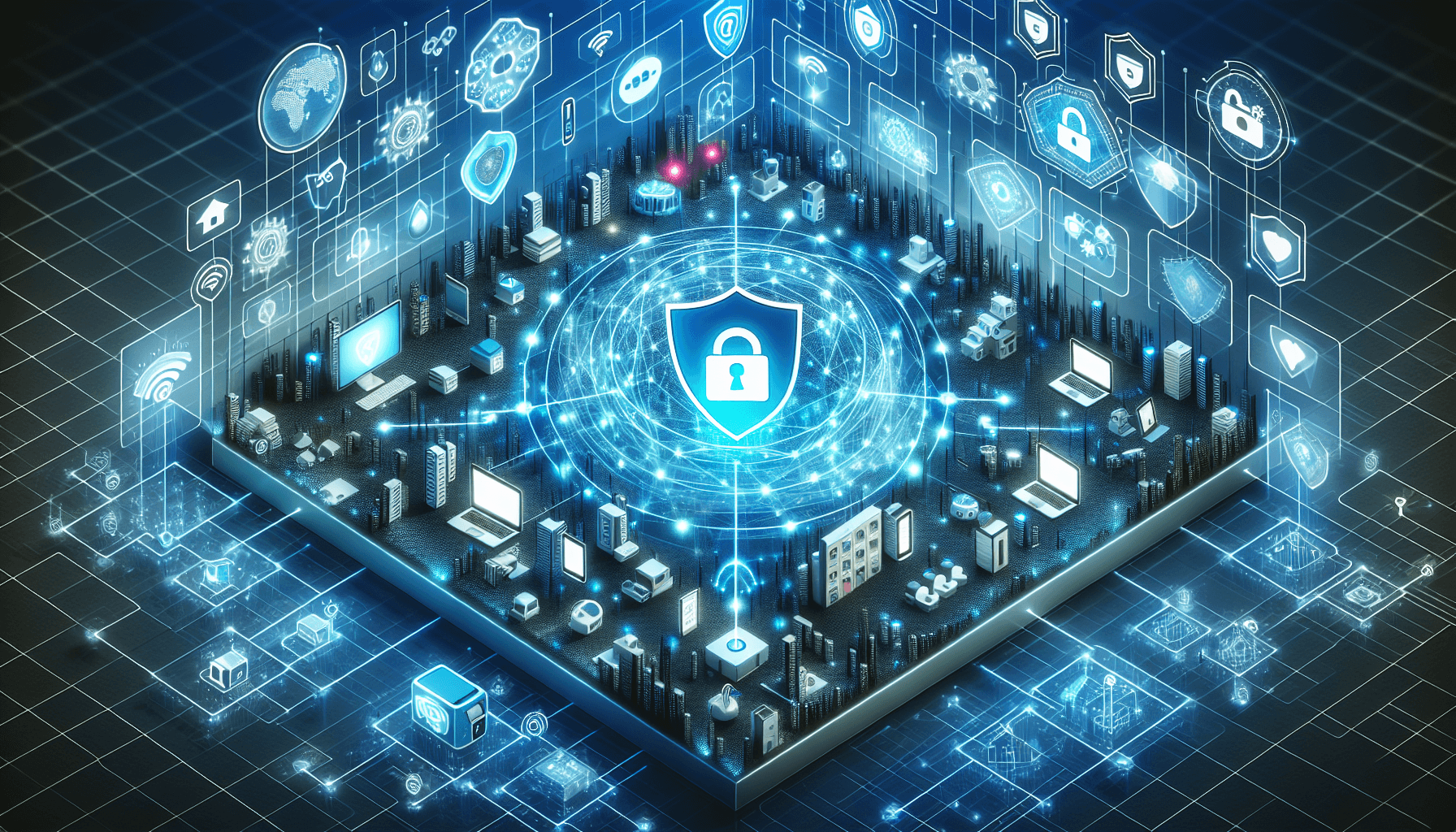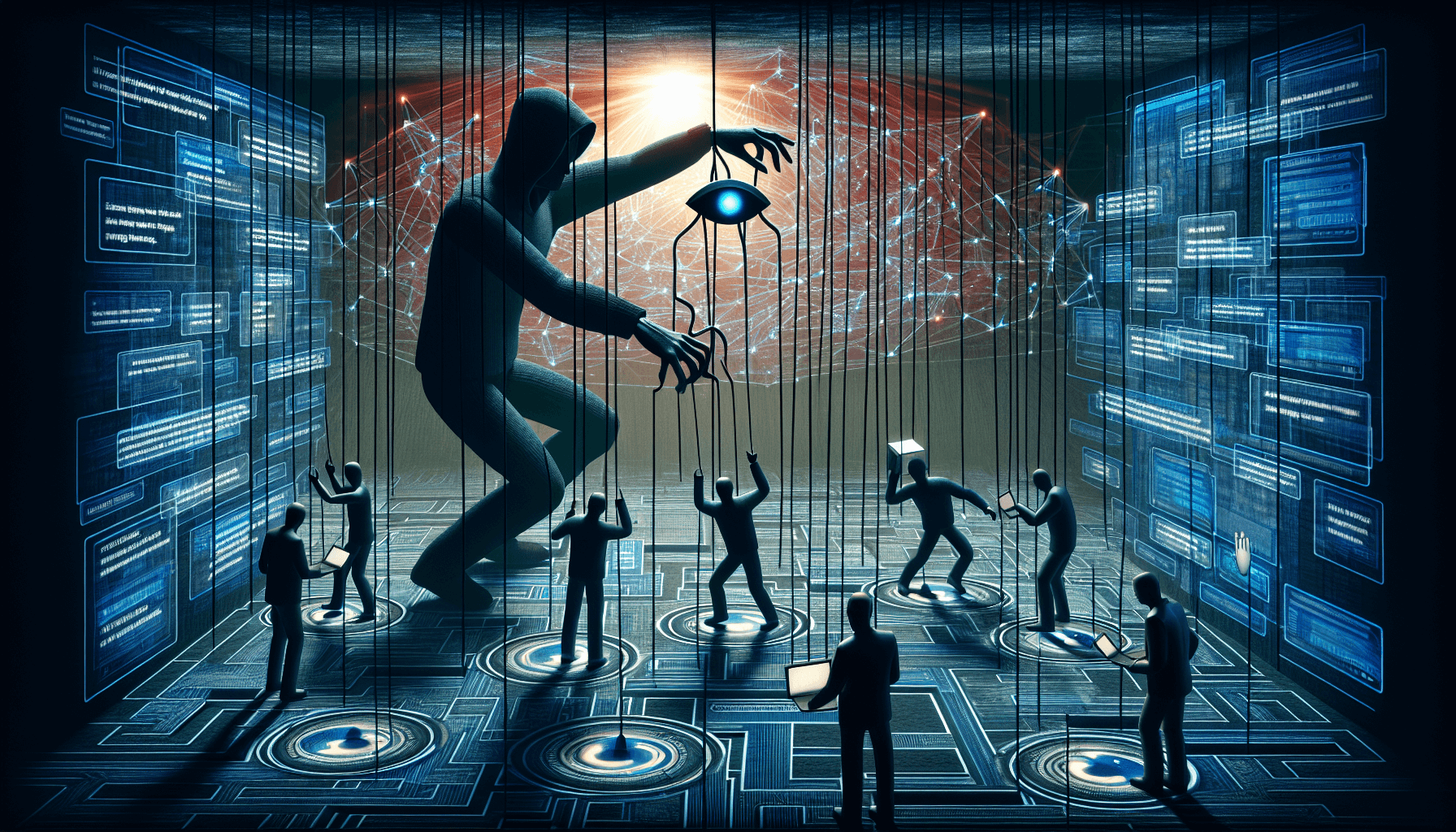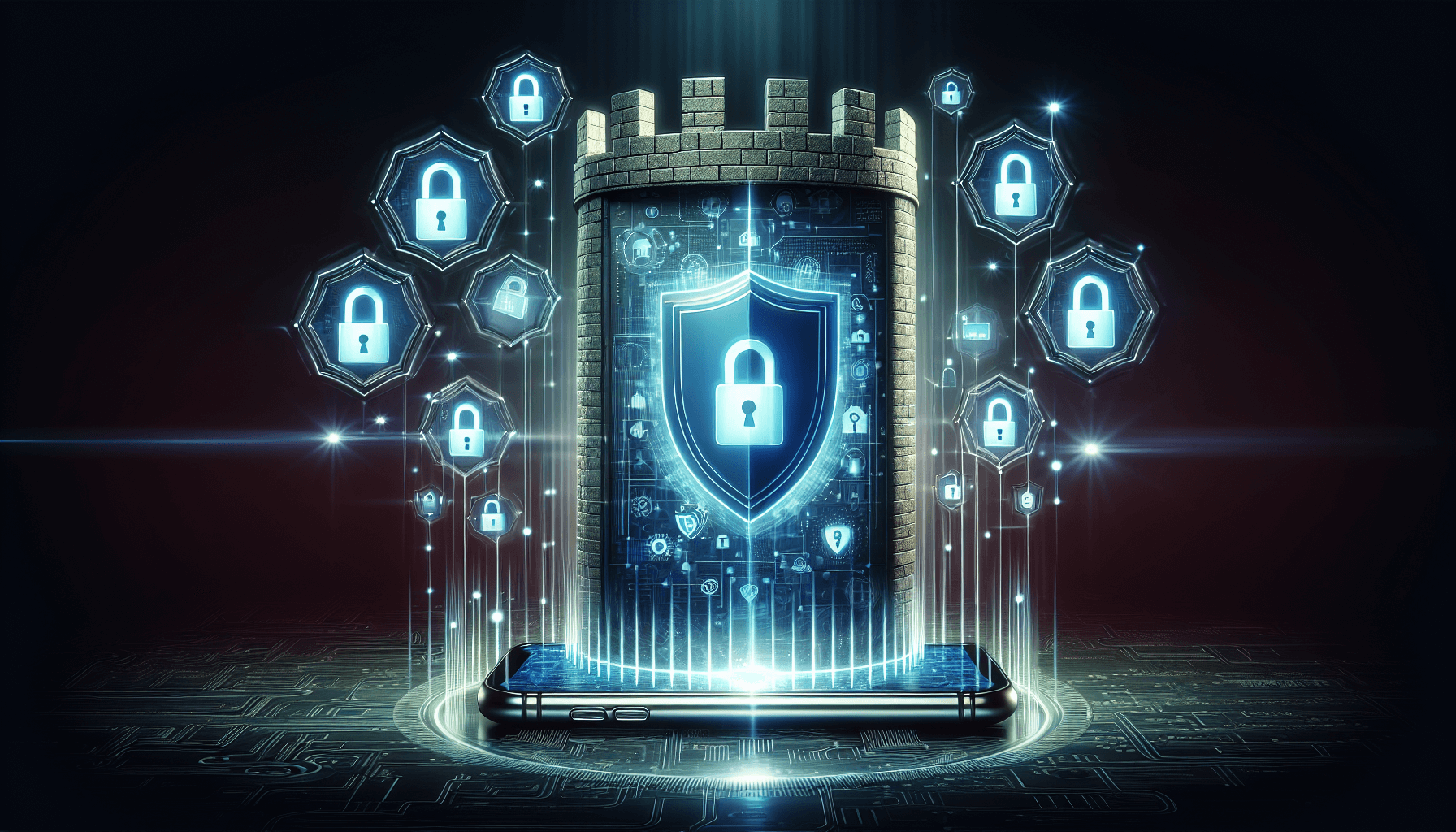Cybersecurity Trends in 2024 is set to redefine our approach to digital defense in an increasingly connected world.
This article presents an essential guide to the foremost trends, from enhanced AI-based security to quantum computing challenges and the necessity of robust IoT protections. Stay informed on how these developments could impact your business continuity strategies and decision-making in a rapidly evolving cyber threat environment.
Key Takeaways
- AI and ML are at the forefront of cybersecurity. They allow for predictive threat detection and automated responses with increased operational efficiency, reducing the need for constant human intervention.
- With the proliferation of IoT devices, robust network security strategies, including regular updates, patch management, network segmentation, and encryption, are essential in protecting against vulnerabilities and potential cyber-attacks.
- The rise of remote work requires rigorous cybersecurity practices, such as using secure remote access tools, adherence to best practices by individuals, and cultivating a culture of vigilance within organizations to safeguard against unauthorized access and other cyber threats.
Based on the latest insights, here’s a simplified table of key cybersecurity trends for 2024, tailored for beginners:
| Trend | Description | Potential Impact |
|---|---|---|
| Generative AI | Emergence of AI technologies in cybersecurity, focusing on ethical and secure use. | It could revolutionize threat detection and response but requires careful management. |
| Cybersecurity Metrics | Use of outcome-driven metrics to align cybersecurity efforts with business objectives. | Improves understanding and communication of cybersecurity’s value to non-technical stakeholders. |
| Security Behavior Programs | We are shifting focus from awareness to behavior change to reduce human-related cybersecurity risks. | Enhances adoption of security practices and reduces incidents due to human error. |
| Third-Party Risk Management | Prioritizing resilience in managing third-party cybersecurity risks. | Reduces the impact of incidents involving external partners or vendors. |
| Continuous Threat Management | Ongoing evaluation of threats to promptly address vulnerabilities. | Significantly lowers the chances of successful breaches. |
| Identity & Access Management | Strengthening identity-focused security measures. | Improves overall security posture by ensuring only authorized access to resources. |
| Remote Work Security | Secure remote access solutions to address the rise in remote work. | Essential for protecting organizational resources accessed remotely. |
| Quantum Computing | Impact of quantum computing on cybersecurity, both as a potential tool and threat. | Necessitates the development of new encryption methods to counteract quantum computing threats. |
| Phishing Evolution | Phishing attacks are becoming more sophisticated, demanding advanced defense strategies. | Requires continuous improvement in detection and prevention measures. |
| Mobile Security | Enhanced security measures for mobile devices due to increased reliance on them. | Critical for protecting sensitive information accessed or stored on mobile devices. |
| Zero Trust Security | Adopting a “never trust, always verify” approach, irrespective of inside or outside the network. | It provides a more robust defense by assuming threats can come from anywhere. |
| DDoS Mitigation | Increasing DDoS attacks necessitate better mitigation services. | Protects servers and networks from being overwhelmed by traffic. |
| Trustworthy Information | Ensuring the protection of reliable information in the age of AI. | Critical for maintaining user trust and combating misinformation. |
| IoT Device Security | We are securing the growing number of IoT devices to prevent them from becoming cyberattack vectors. | Vital for protecting networks that include IoT devices from potential breaches. |
| Investment Optimization | We are consolidating and optimizing cybersecurity investments for better ROI and effectiveness. | Ensures efficient use of resources to combat evolving cyber threats. |
These trends highlight cybersecurity’s dynamic and evolution, emphasizing the need for adaptive and proactive strategies to safeguard digital assets and information in 2024.
For beginners, understanding these trends can provide insights into the broader context of cybersecurity and its significance in today’s digital world.
AI-Powered Cyber Defense: Staying One Step Ahead

The arms race in cyberspace has escalated to a new frontier, where artificial intelligence (AI) and machine learning (ML) stand as our vanguard.
These technological sentinels tirelessly evolve, sharpening their capabilities to predict and parry cyber adversaries’ swift strikes. In the silence of server rooms, AI algorithms vigilantly scan for anomalies, dispatching alerts with the swiftness of a digital reflex and pioneering the advent of AI-driven security bots that counter threats autonomously.
The beauty of this AI-infused cyber defense lies not only in its effectiveness but also in the operational efficiencies it heralds, promising a future where:
- human intervention is a strategic choice rather than a necessity
- organizations that harness these intelligent technologies fortify their security posture
- an invisible yet impenetrable barrier is erected against the onslaught of cyber attacks
Securing the IoT Ecosystem: Challenges and Solutions

Amidst a world teeming with interconnected devices, the Internet of Things (IoT) ecosystem presents a compelling target for digital marauders. The sheer diversity of gadgets, each a potential weak link in our security chain, demands a vigilant and strategic approach to safeguard our digital dominion. Manufacturers, often guilty of setting weak default passwords, are learning that simplicity can no longer trump security, as these basic credentials are easily plundered.
The bulwark against such vulnerabilities lies in a tapestry of robust strategies for network security, which are informed by top cybersecurity trends:
- Regular firmware updates fortifying the defenses
- Patch management serving as a vigilant watchman
- Network segmentation acts as a series of fortified gates within our cyber castle
- We are securing the pulsing veins of our network with the digital equivalent of armored transport—methods like HTTPS and end-to-end encryption that protect the lifeblood of IoT data transmissions from the prying eyes of cyber predators.
Remote Work Revolution: Cybersecurity Implications and Best Practices
The remote work revolution has redrawn the boundaries of our workplaces, extending the frontier of our professional lives far beyond the traditional office walls. With this expansion comes many cybersecurity implications, as each remote connection introduces a new potential breach point.
Solutions like Splashtop have emerged as digital strongholds. They offer encrypted conduits for our data and require multiple proofs of identity to guard against unauthorized access. These solutions ensure secure and seamless remote work experiences by utilizing cloud services.
The onus also falls upon the individual, for we can best defend our digital selves through disciplined adherence to best practices—keeping devices under a watchful eye, connecting securely even in the most public spaces, and maintaining a steadfast alliance with updated security software.
Organizations, in turn, must foster a culture of cyber security vigilance, equipping their digital nomads with the knowledge to thwart cyber threats and providing employee training and policies to guide them in the art of secure telecommuting.
They become cybersecurity leaders in their respective industries by staying informed about cybersecurity trends.
Quantum Leap: Preparing for Quantum Computing’s Cybersecurity Impact
As we stand on the precipice of a new era in computing, the emergence of quantum technologies whispers promises of immense power and profound vulnerability. The once-unassailable fortress of traditional encryption methods faces the seismic threat of being laid bare by the formidable might of quantum computing.
With its quantum computers, the future looms like a colossus capable of shattering our cryptographic shields, compelling us to forge new armaments using quantum-resistant encryption methods.
Yet, this quantum leap is not solely a harbinger of doom; its immense complexity lies in the potential to revolutionize our cybersecurity strategies, from sophisticated algorithms for threat detection to robust, secure data operations empowered by quantum advancements.
As we gaze into the quantum horizon, we must prepare to harness its power responsibly, ensuring that our cybersecurity measures evolve with this groundbreaking technology.
Evolving Phishing Techniques: Staying Vigilant Against Social Engineering Attacks

Phishing, the chameleon of the cyber threat landscape, continually adapts its hues to blend with our digital routines, ever-present and ever-evolving. It’s a testament to the ingenuity of cyber criminals who craft ever-more convincing lures to trap the unwary as they navigate the world of evolving threats.
Multi-factor authentication stands as a steadfast guardian at the gates of our digital identities, demanding not just one key but several, making it exponentially harder for attackers to gain entry to our virtual vaults.
The fight against these insidious tactics extends beyond technological barricades; it requires an army of informed and vigilant employees, armed with knowledge and skepticism, to recognize and repel the deceptions woven by these social engineers. Implementing security measures like multi-factor authentication and efficient security operations is crucial in this ongoing battle.
Mobile Device Security: Safeguarding Sensitive Data on the Go

Mobile devices have become the repositories of our most sensitive information in a world where the line between professional and personal life is increasingly blurred.
Securing these digital companions requires sophisticated mobile device management (MDM) platforms equipped with the latest security features and AI’s prescience to identify threats preemptively. With identity and access management integrated, these platforms ensure that only authorized users can access mobile device usage and sensitive data.
As we adorn ourselves with an ever-expanding array of smart devices, MDM solutions have adapted to manage not just phones and tablets but also the burgeoning realm of wearables and immersive technologies.
The key to adequate mobile security in this rapidly shifting landscape is a user-centric approach that harmonizes stringent security with seamless user experiences, ensuring that the guardianship of our data does not come at the cost of our digital freedom.
Embracing Zero Trust: Implementing a Proactive Security Model
The cybersecurity world is abuzz with a maxim that echoes the sentiments of a bygone era: “Trust no one.” This is the Zero Trust model creed, a paradigm shift that dispenses with the old-fashioned idea of implicit trust within the network’s confines.
Zero Trust security architectures are built upon the bedrock of continuous verification, scrutinizing every request for access as if it were an intruder, regardless of its origin.
By implementing stringent access controls and embracing the philosophy of least privilege, organizations can effectively curtail the silent spread of threats that might otherwise move unhindered through the network’s arteries.
As we weave the fabric of this proactive security model into the very DNA of our digital estates, we not only fortify our defenses against external foes but also diminish the shadow of insider threats that lurk within.
Bridging the Cybersecurity Skills Gap: Developing the Next Generation of Experts
Yet, even as we marshal our technological defenses, a different challenge looms: the cybersecurity skills gap. This chasm, widening in the face of an onslaught of sophisticated threats and security challenges, beckons for a new cadre of skilled cybersecurity professionals.
It is within the hallowed halls of academia that the seeds of this new generation are being sown, with curricula expanding and certifications burgeoning to arm the following line of defense with the requisite knowledge and skills.
The bridge that spans this gap is strengthened by the ligaments of public-private partnerships and collaborations that meld the theoretical prowess of educational institutions with the pragmatic demands of the cybersecurity industry.
In this rapidly evolving digital landscape, the continuous cultivation of cybersecurity expertise through workshops, training, and seminars is beneficial and essential for the guardians of our critical infrastructure.
Blockchain’s Role in Cybersecurity: Enhancing Data Protection and Identity Management

In the quest for impervious cybersecurity, we gaze to an unlikely ally: blockchain technology. Its immutable, transparent, and resilient cryptographic bedrock provides a bulwark against data tampering and breaches that have long plagued our digital corridors.
Blockchain’s prowess extends into identity management, allowing individuals and organizations to wield control over their identity data with unprecedented security, thus mitigating the risk of identity theft and fraud.
As we peel back the layers of blockchain’s potential, we must also cultivate an understanding of its capabilities beyond the realm of cryptocurrencies, recognizing its role in fortifying the cybersecurity landscape and enhancing operational efficiency.
Cybersecurity Insurance: Mitigating Financial Risks in a Digital World
In the shadow of cyber threats, organizations seek solace in the assurance of cybersecurity insurance—a bulwark against the financial tempests wrought by digital calamities. The calculus of risk and protection takes on a new dimension as insurers scrutinize organizations’ cybersecurity strategy and maturity, influencing premiums and driving enterprises to fortify their defenses.
In this calculus, cybersecurity insurance emerges not merely as a financial safety net but as a catalyst for enhancing cybersecurity measures across the board.
As the digital world continues to evolve, so does the landscape of cybersecurity insurance, with its premiums adjusted like the sails of a ship, guided by the winds of cyber risk and the steadfastness of an organization’s proactive defense measures.
Overview
As we stand amidst the ever-changing cybersecurity battlefield, the insights gleaned from our exploration are like beacons illuminating the path ahead.
The trends and technologies discussed herein—from the vigilant AI sentinels to the steadfastness of Zero Trust, from the innovative promise of blockchain to the strategic foresight of cybersecurity insurance—represent the multi-faceted approach required to navigate the treacherous tides of cyber threats.
Let this knowledge serve as both shield and compass, guiding individuals and organizations in fortifying their digital domains against the relentless onslaught of cyber adversaries.
In embracing these trends, we secure our present and pave the way for a future where cybersecurity is not a mere afterthought but an integral part of our digital existence.
Through vigilance, education, and the continuous evolution of our strategies, we can hope to stay one step ahead of those who seek to undermine the sanctity of our digital world.
So, let us march forward with renewed determination, armed with the expertise, cybersecurity resources, and foresight that will define the vanguard of tomorrow’s cybersecurity landscape.

Frequently Asked Questions
What is the future of cybersecurity in 2024?
In 2024, the cybersecurity sector will shift towards small language models that provide tailored insights to security teams, empowered by real-time data training to adapt to evolving threats.
What are the physical security trends in 2024?
In 2024, businesses must adopt critical physical security trends, such as the collaborative power of AI and automation, the convergence of physical and cybersecurity, and innovations in biometrics and access control, to remain competitive. These key trends are critical for enhancing security and avoiding potential threats.
What are ransomware trends in 2024?
In 2024, ransomware trends are expected to include targeted cell-level data corruption attacks, where hackers implant code within a victim’s database to alter or corrupt specific data if a ransom is not paid.
What role does AI play in cybersecurity?
AI is crucial in all cybersecurity efforts. It improves threat detection, reduces human intervention, and continuously improves an organization’s security measures. It is pivotal for bolstering cyber defense.
How can IoT devices be secured against cyber threats?
To secure IoT devices against cyber threats, implement robust strategies, such as strict access controls, regular firmware updates, network segmentation, and secure network connections using methods like HTTPS or end-to-end encryption while raising user awareness about security practices. This approach helps enhance the security of IoT devices and protect them from cyber threats.
Disclaimer: The content on this site should not be considered investment advice. Investing is speculative. When investing, your capital is at risk.







